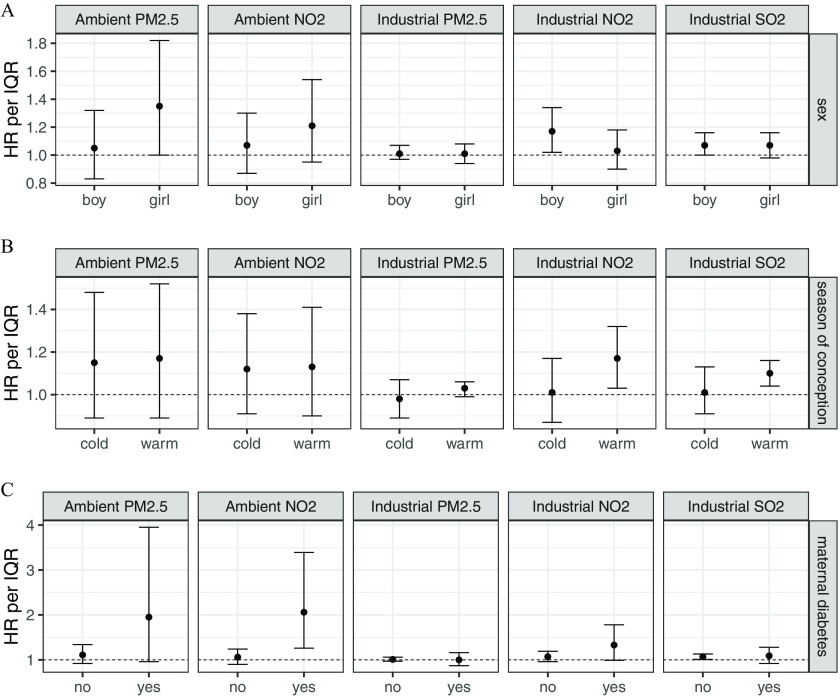Figure 1.
Adjusted hazard ratio (HR) between prenatal exposure to ambient and industrial air pollution and incidence of childhood Kawasaki disease, according to (A) child sex, (B) season of conception, and (C) maternal diabetes. Dots represent the mean HR for an interquartile (IQR) increment in air pollutant exposure, and bars represent 95% confidence intervals (CIs), estimated separately for each subgroup using single-pollutant Cox models adjusted for maternal age, parity, sex, multiple birth, maternal smoking during pregnancy, material deprivation, birth year, and rural/urban residence. The horizontal axis indicates binary categories for sex (girl/boy), season of conception (cold/warm), and maternal diabetes (no/yes). IQRs are for industrial fine particulate matter (), for industrial nitrogen dioxide (), for industrial sulfur dioxide (), for ambient , and for ambient . Numeric values for HRs and 95% CIs, as well as number of cases in each subgroup and -value of Cochran Q tests, are provided in Table S4.

